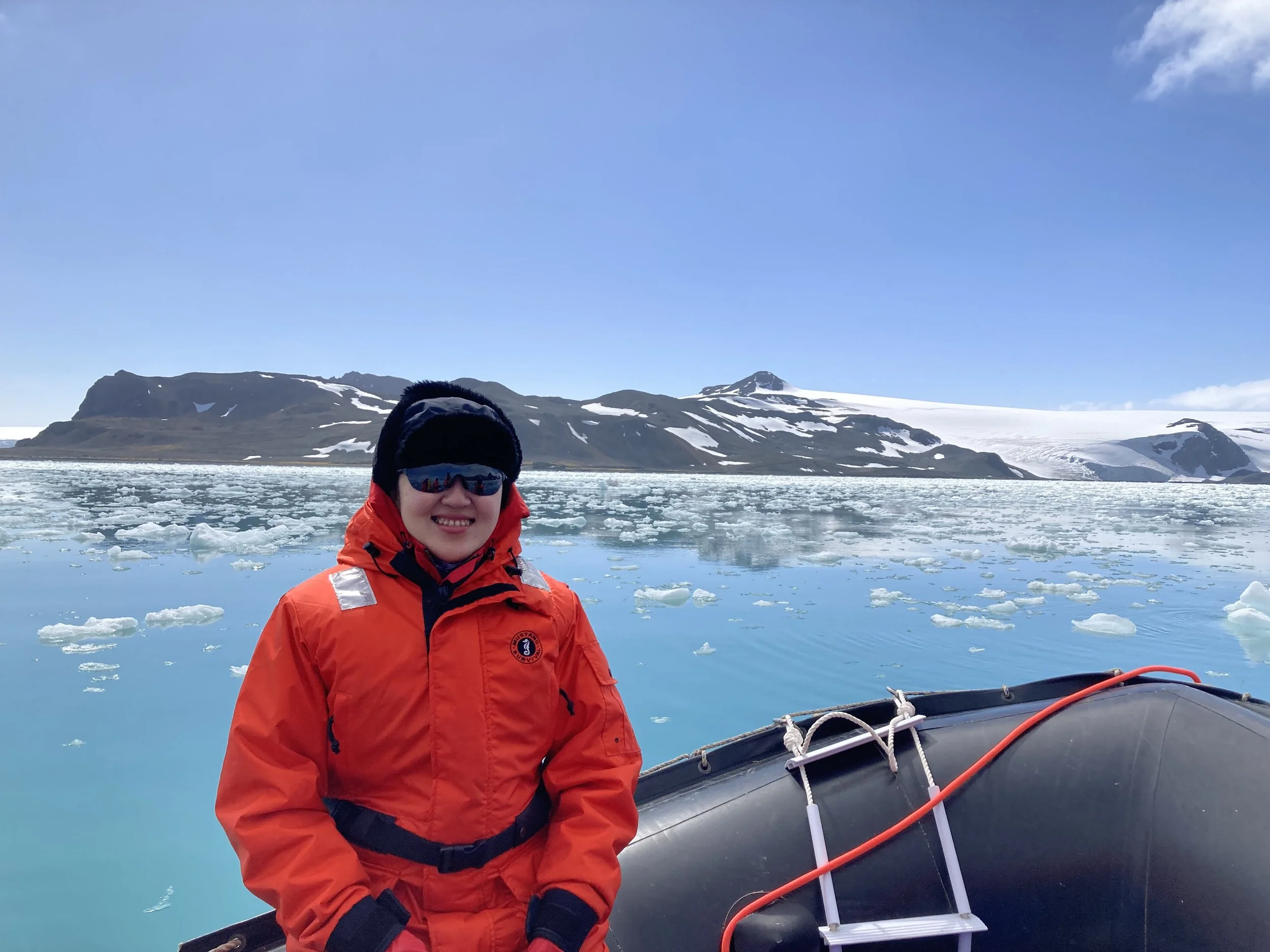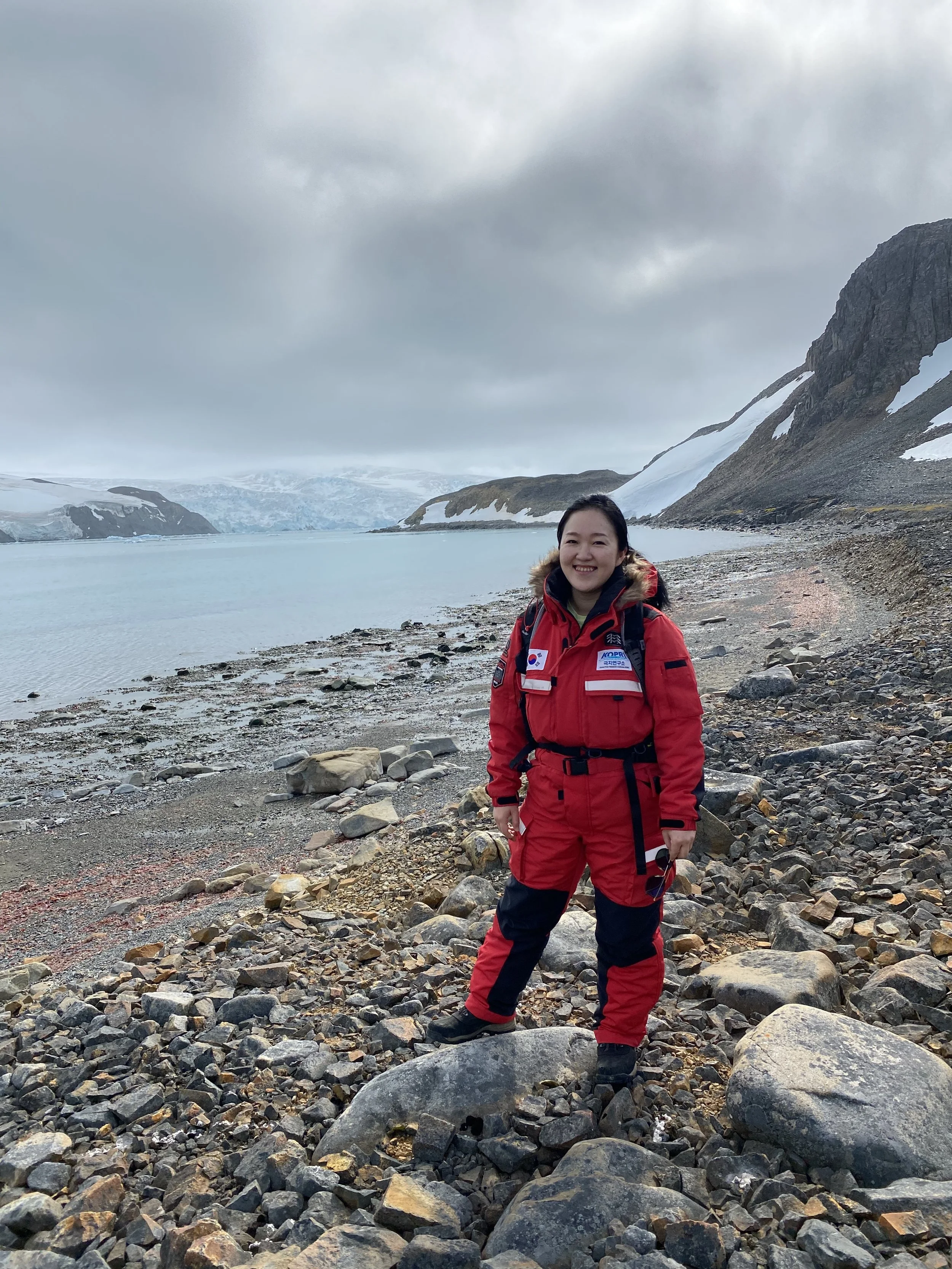Seunghyun Kang
Researchers like Seunghyun Kang are on the frontline of embracing the intersectionality of conservation and genomics.
At the edge of Antarctica, stillness reigns. The only source of loud noise comes from humans. But if you were to stop and remain quiet, the world returns to its natural, unbroken calm—a silence unlike anywhere else on Earth.
In that stillness, Seunghyun Kang, Principal Research Scientist at Korea Polar Research Institute (KOPRI), searched for organisms and found the icy continent to be teeming with life. Turning over seaweed and moss along the shore revealed amphipods and swarming springtails.
“These creatures quietly and diligently go about their lives. In those moments, I feel the awe of life and realize that humans are just one among many species inhabiting this planet,” said Seunghyun.
Seunghyun studies Antarctic biodiversity and environmental adaptation using genomics tools and DNA barcoding techniques. She is also a member of the Committee for Environmental Protection (CEP) which provides advice and recommendations for the Antarctic Treaty Consultative Meeting (ATCM) where Seunghyun represents South Korea. She contributes to initiatives focused on environmental conservation, environmental impact assessments near Antarctic research stations, and the management of specially protected areas in Antarctica.
Seunghyun's path to discovering her passion for conservation genomics was anything but conventional. She began her academic journey majoring in economics. Like many students entering university, she chose the major based on her parent's and teacher's recommendations. Seunghyun became increasingly interested in how humans make decisions, leading her to study game theory and eventually, evolutionary psychology and biology. She found that when humans are given limited information, they typically decide against the “best” choice in favor of the “optimal” one.
“Similarly, the process of evolution in living organisms is not about achieving perfection but about making continuous optimal adaptations to their environment—a realization that gave me chills,” said Seunghyun.
Seunghyun went on to say there’s no ultimate creature that combines an eagle's vision, a cheetah's speed, and a starfish's regenerative abilities. Evolution is a cumulative result of countless "good enough" choices in specific environments. This made her itch to study evolution happening in real time.
“I delved into this field, it naturally connected to conservation,” said Seunghyun.
After joining KOPRI in 2014, Seunghyun primarily focused on genomic research. She worked on a proposal for the CEP in 2021 for the designation of the emperor penguin as a specially protected species in response to the anticipated loss of Antarctic sea ice and their declining population due to the climate crisis. Despite KOPRI’s continuous monitoring efforts of the species, a consensus was not reached and the designation was not approved. Regardless, KOPRI plans to collaborate with ecological researchers to analyze the genetic diversity and population structure of penguins in ASPA regions further. They hope their findings can serve as the scientific basis for designing effective conservation strategies and enhancing the long-term survival of the species.
The genomic information of Antarctic organisms remains largely unexplored, with significant gaps in our understanding of the biodiversity within its freshwater and marine ecosystems. Many key species, even those that dominate the food chain, still lack genomic data. This lack of research limits our ability to fully comprehend the roles these organisms play in their ecosystems and their adaptations to the extreme conditions of the Antarctic. The scarcity of genomic information also makes it challenging to predict how these species may be affected by environmental changes, particularly as climate change continues to impact the region. However, Seunghyun explains that building a biological information database is a resource-intensive task that requires significant human power, time, and financial investment.
“Bridging the gap between reference genomes and conservation action requires making genomic data accessible and actionable for conservation practitioners. This involves fostering collaboration among geneticists, ecologists, and policymakers, as well as developing tools for real-time monitoring and decision-making. Aligning genomic research with conservation policies and showcasing successful case studies can further drive its practical application” said Seunghyun.
Her team’s plan is to conduct surveys on the biodiversity around King George Island, where the King Sejong Station is located, and the Ross Sea, near the Jang Bogo Station. Seunghyun and her team will then collaborate with taxonomists to create a curated DNA barcode database for as many species as possible. They will be focused on identifying reference genome information for ecologically significant species in order to use the data for long-term biodiversity monitoring, invasive species monitoring, and studies on ecological responses to environmental changes.
Reflecting on her journey, Seunghyun thinks back to a pivotal moment after earning her Ph.D., when she visited her parents’ home to sort through her childhood belongings. Among her old papers, she found a document she had written at around ten years old.
“I had written my future dream—and to my astonishment, it said "scientist." I had no memory of this, but seeing that paper made me realize that I had unknowingly fulfilled the dream I had as a child,” she shared.
Now, standing in the stillness of Antarctica’s frigid polar desert, Seunghyun often reflects on how that childhood ambition has come full circle. Her research doesn’t stop at uncovering genomic insights—it serves as a foundation for policies that mitigate the impacts of climate change and human activity. Through her work, Seunghyun exemplifies how science can connect discovery with action, ensuring that even the planet's most remote places are protected for generations to come.
Written by: Maja Peirce (Earth BioGenome Project: Communications & Creative Services Specialist)




